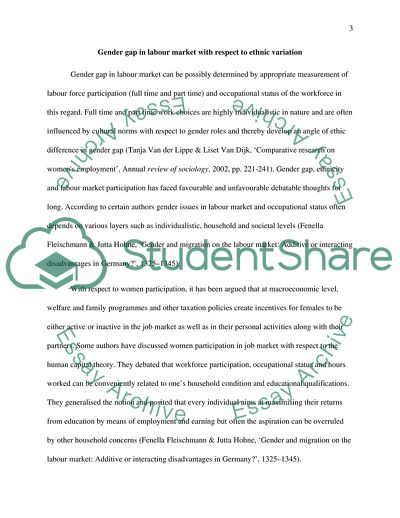Cite this document
(Labour Market Disadvantage for Women and Ethnic Minorities Coursework Example | Topics and Well Written Essays - 2000 words, n.d.)
Labour Market Disadvantage for Women and Ethnic Minorities Coursework Example | Topics and Well Written Essays - 2000 words. https://studentshare.org/social-science/1856635-equality-and-diversity-1how-far-and-in-what-ways-do-women-and-ethnic-minorities-experience-labour-market-disadvantage-how-would-you-explain-this-disadvantage
Labour Market Disadvantage for Women and Ethnic Minorities Coursework Example | Topics and Well Written Essays - 2000 words. https://studentshare.org/social-science/1856635-equality-and-diversity-1how-far-and-in-what-ways-do-women-and-ethnic-minorities-experience-labour-market-disadvantage-how-would-you-explain-this-disadvantage
(Labour Market Disadvantage for Women and Ethnic Minorities Coursework Example | Topics and Well Written Essays - 2000 Words)
Labour Market Disadvantage for Women and Ethnic Minorities Coursework Example | Topics and Well Written Essays - 2000 Words. https://studentshare.org/social-science/1856635-equality-and-diversity-1how-far-and-in-what-ways-do-women-and-ethnic-minorities-experience-labour-market-disadvantage-how-would-you-explain-this-disadvantage.
Labour Market Disadvantage for Women and Ethnic Minorities Coursework Example | Topics and Well Written Essays - 2000 Words. https://studentshare.org/social-science/1856635-equality-and-diversity-1how-far-and-in-what-ways-do-women-and-ethnic-minorities-experience-labour-market-disadvantage-how-would-you-explain-this-disadvantage.
“Labour Market Disadvantage for Women and Ethnic Minorities Coursework Example | Topics and Well Written Essays - 2000 Words”. https://studentshare.org/social-science/1856635-equality-and-diversity-1how-far-and-in-what-ways-do-women-and-ethnic-minorities-experience-labour-market-disadvantage-how-would-you-explain-this-disadvantage.


